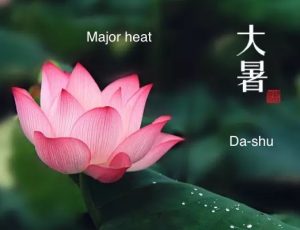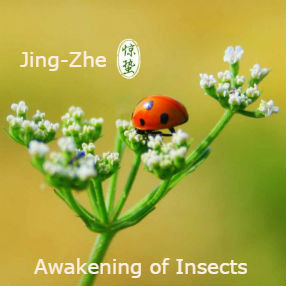
Da-shu (noun) 大暑 (Chinese): Major heat (12 solar term) , literally in Chinese “da” 大 = big, “shu” 暑 = heat.
Example:
In the ancient Chinese agriculture calendar, Da-shu 大暑 (major heat) is the 12th solar term out of the 24 solar terms in a year. Da-shu begins when the Sun reaches the celestial longitude of 120° and ends when it reaches the longitude of 135°. Da-shu more often refers in particular to the day when the Sun is exactly at the celestial longitude of 120°. In the Gregorian calendar, it usually begins around 22 July (23 July East Asia time) and ends around 7 August. The hottest days of summer are Da-shu (Dog days of Summer in English). In the Chinese traditional calendar, there are three hot and humid periods in the summer known as 三伏 (San-fu) literally san = three, fu = hidden (hiding from the hot weather). San-fu is usually divided into three 10-day periods. During the first ten days 初伏 (chu-fu) chu = beginning, the weather is getting hot. Da-shu is always on the second 10 hottest days 中伏 (zhong-fu) zhong = middle. The second scorching 10 days 中伏 (some years 20 days) are the hottest days of the year. The last 10 days 末伏 (mo-fu), mo = end, are getting cooler and reaching the autumn season. Therefore San-fu-tian 三伏天 tian = day (dog days of summer) lasts 30 days or 40 days in some other years.
In ancient China, Da-shu 大暑 was divided into three periods 三候: “the first-period 腐草为萤, terrestrial fireflies are oozing out from rotten hay; the second 土润溽暑, the soil is moisturizing; third-period 大雨时行, thunderstorms will appear and begin to transition to the beginning of autumn.”
Since ancient times, Da-shu has been a solar term for agricultural purposes in the lunar calendar. Da-shu is still remembered and celebrated as a Chinese traditional festival.

